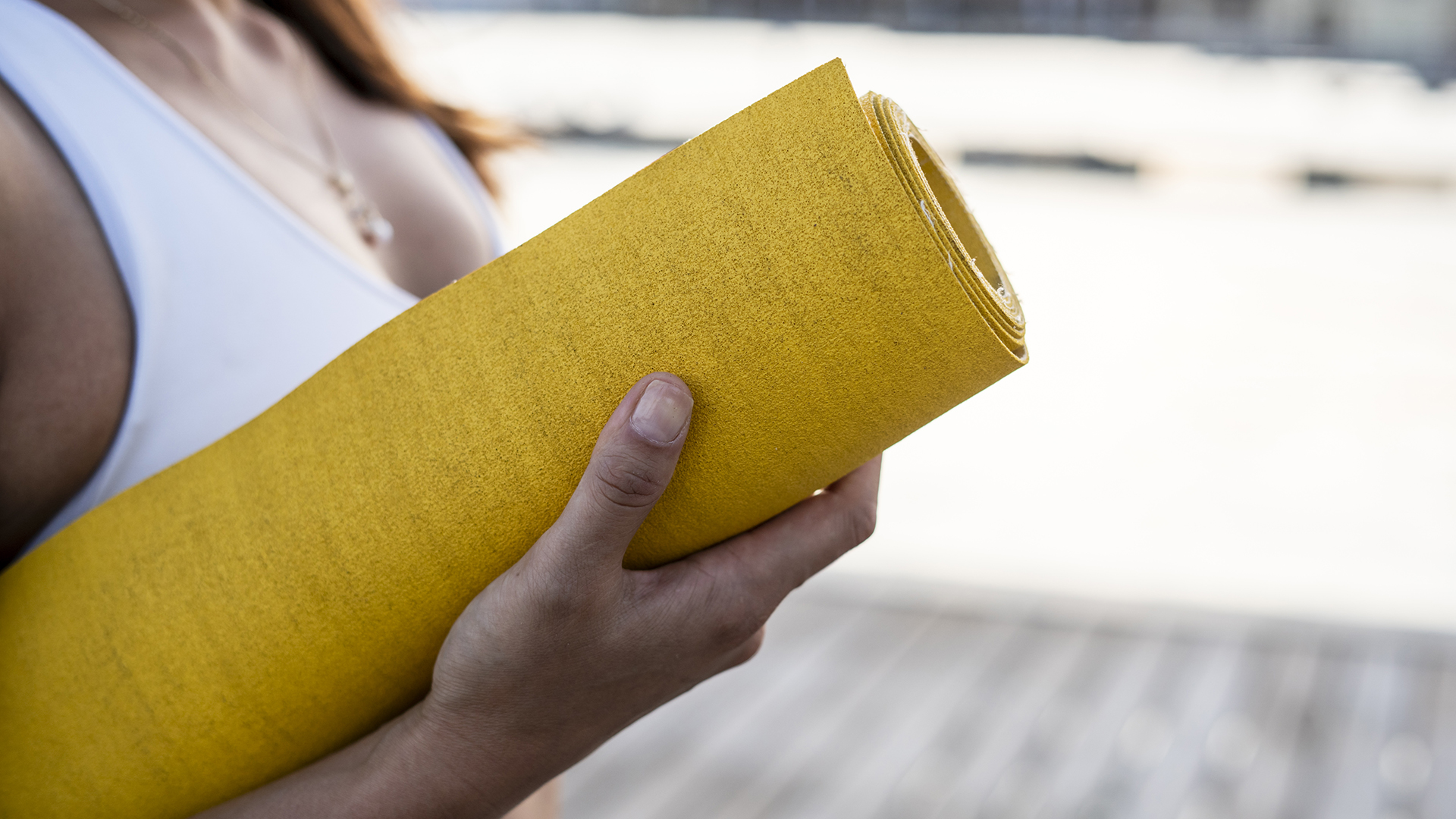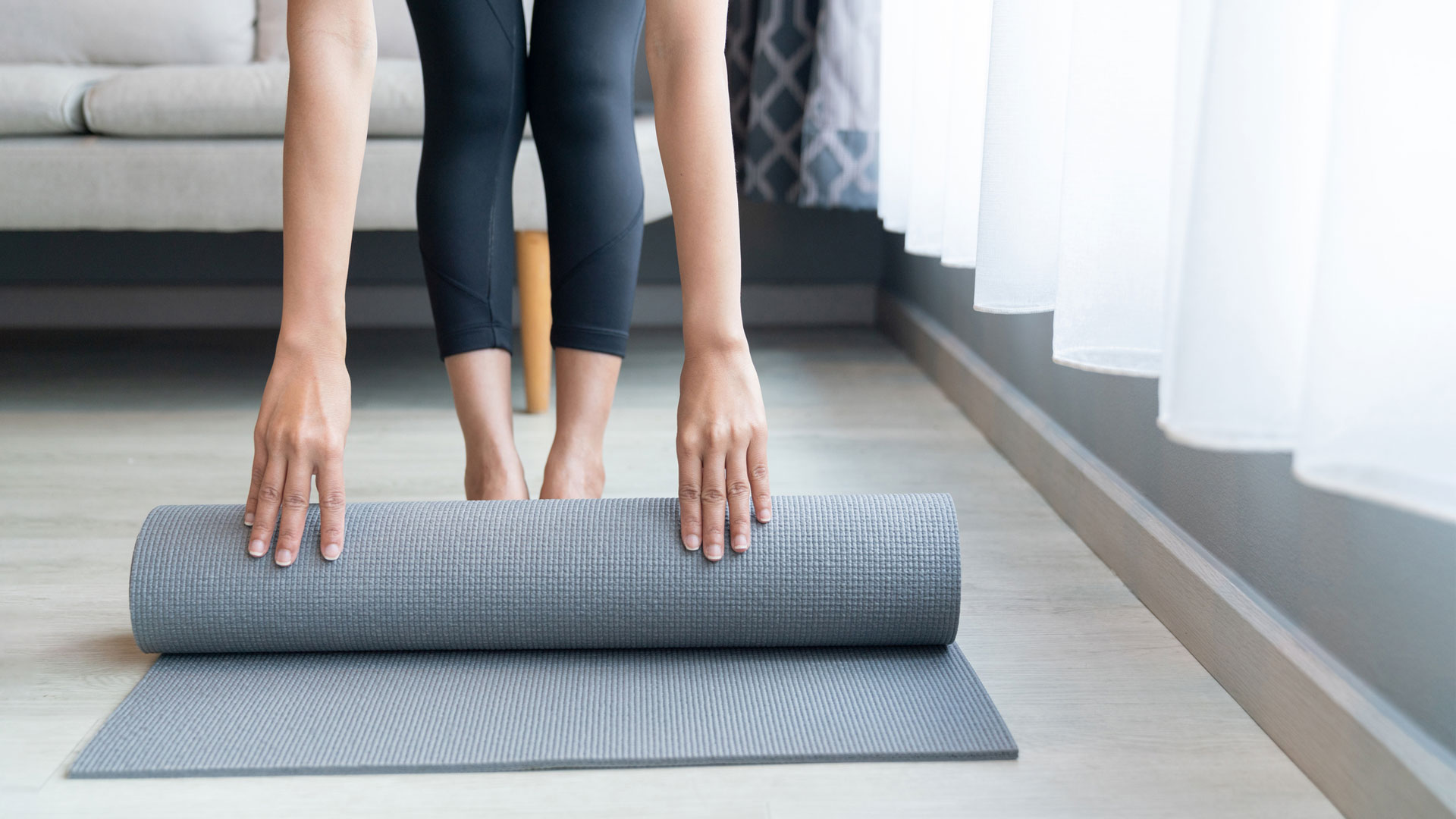How to clean a yoga mat
How to clean a yoga mat: information and advice on optimum hygiene for your yoga mat.

Knowing how to clean a yoga mat is the best way to ensure that your mat is always in the best condition whatever your activity of choice, be it developing your mind-body connection with yoga, or strength and flexibility with pilates.
Consider how you care for your yoga mat, as it’s important not to overlook the hygiene and longevity of your mat as it sustains you. You may wipe down your mat after a session, or wonder if you should put it through the washing machine for a good clean. There are some clear tips to enhance the health of your mat and advice for how to clean a yoga mat.
With the range of yoga mats available, there are a number of ways you can keep your yoga mat clean giving you the best base to work from. Check out when, how and why to take of your yoga mat plus evidence-based strategies, to ensure optimal health for you and your practice.
- Related: Best yoga mat
How often should you clean a yoga mat?
It is a good idea to clean your mat after each yoga session. Think about the way you use your yoga mat, whether in a hot yoga class or focussing on centering yourself in stillness with Yin yoga. Your yoga mat is in constant contact with a sweaty, warm and moist environment.

Jessica Ek, Director of Digital Communications at the American Cleaning Institute, told Live Science, "Bacteria and germs thrive in dark, moist environments, like a rolled-up yoga mat that has sweat on it after being used but not cleaned. The next time you use that mat, those germs that have been multiplying can transfer back onto your skin and clothes. For skin health as well as general health, it’s important to keep your workout gear clean."
Cleaning your yoga mat after each class will reduce the build-up of bacteria and germs.
"If you’ve been sweating, you’ll want to clean it after each use. That could be as little as spot cleaning it or wiping it down and letting it dry."
If left untreated, there is increased potential for health issues with continued exposure to dirty surfaces.
How to clean a yoga mat thoroughly
You may clean your mat after class and once in a while do a thorough clean, but there is a key difference between cleaning and disinfecting. For the best results it is important to use both processes in the maintenance of your yoga mat.
"It’s a matter of removing vs. killing or inactivating pathogens, microorganisms that cause infection and disease," said Ek.
A combination of soap and water is all you need to clean most mats.
Yoga mats are commonly made of PVC, a material that is non-porous and can tolerate soap and water quite well.
With PVC mats, make sure to protect the integrity of your yoga mat. PVC mats often have a sticky feel to the surface that enhances grip and stability in practicing yoga, scrubbing the mat surface can damage that supportive top layer.

While regular cleaning is important, don’t overlook the process of disinfecting your yoga mat. Tea tree is commonly used as a disinfectant as it has antiseptic properties.
Ek explained that, "When disinfecting, you are irreversibly inactivating the pathogens on that surface."
While cleaning removes germs and dirt, disinfecting kills any remaining bacteria and other contaminants.
Again, with the varying material of yoga mats do check the advice of the manufacturer as some mats will be made of materials more sensitive to certain oils and soaps.
With yoga mats made from polyurethane, you can wipe down your mat to clean it. However, be aware that these mats are more porous in nature and as such exposing them to too much fluid may damage the non-slip properties of the yoga mat, something that's so important for people practising yoga. Too much liquid may also interfere with the aesthetics of your mat, as the absorption may leave stains.
At a foundation level, it’s helpful to know that rubber mats are not suited to a high concentration of essential oils as they can damage the mat over time.
Yoga mats made from cork are also sensitive to high levels of oils but due to the natural anti-microbial properties of cork, they are much more sustainable as they are able to resist bacteria and germs as well as smell.
Do you need to wash your mat if you use a towel?
Using a towel during yoga isn’t a bad idea as it provides a layer between you and your mat that is easily cleaned between classes. However, using a towel doesn’t mean you don’t need to think about mat hygiene.
While a towel can provide some absorbency for sweat and moisture accrued during a yoga class, your mat will still pick up some germs and bacteria during use.
You may need to clean it less regularly but it’s important not to neglect it completely. Every time you wipe down your mat after use you are lessening the risk of health issues and unpleasant odors interfering with your session.
How often should you replace your yoga mat?
There are a few factors at play in deciding when to invest in a new mat. How often you use your mat, the kind of classes you’re doing, and your level of care in cleaning and storing your mat will all impact the life of your yoga mat. The more eco-friendly mats made from rubber or cork will also break down quicker than the PVC yoga mat.
"If you notice the mat coming apart, getting slippery in places or providing inadequate cushioning over time, those are probably signs to look for a new mat," says Ek.
The most important thing in terms of hygiene, protecting yourself from germs and bacteria, is the odor factor. Once you’ve become aware of an unpleasant smell that isn’t removed by cleaning, then it may be time to get a new mat.
Sign up for the Live Science daily newsletter now
Get the world’s most fascinating discoveries delivered straight to your inbox.
Kathryn Courts is a health and fitness writer with a passion for topics looking at holistic wellbeing. With experience in the field of mental health and fitness, Kathryn integrates knowledge with practice. She takes particular interest in the links between neuroscience and patterns of behavior, hoping to provide insight and education in developing healthy relationships and self-care. When not writing she is appreciating the outdoors, looking for new walking tracks or relaxing by the water.











